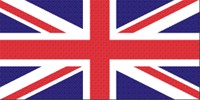A £1.6bn one-ton robot rover the size of a small car has landed safely on Mars after one of the most daring and difficult interplanetary operations attempted.
ROVER FACTS
- Launched on Nov 26, 2011
- Will search for signs of past life
- Travelled 204 million kilometres to Mars
- Rover dimensions: 3 metres long, 2.8 metres wide
- Carrying 10 scientific instruments
- Weighs 899 kilograms
- Rover size requires new landing system
- Primary mission length: 98 weeks
- Expected Mars temperatures: -90C to 0C
- Mission cost: $2.37 billion
Source: NASA
The six-wheeled rover Curiosity was lowered to the Martian surface on three nylon tethers suspended from a hovering “sky crane” kept airborne with retro rockets.
An expected signal confirming that the robot had landed was received on Earth at 6.31am UK time.
There were scenes of jubilation at Nasa’s Jet Propulsion Laboratory in California when the message came through to mission control: “Touchdown confirmed.” – The Guardian
The US space agency has landed a huge new robot rover on Mars.
The one-tonne vehicle, known as Curiosity, touched down in a deep crater near the planet’s equator after a plunging through the atmosphere.
It is going to look for evidence that Mars could once have supported life.
A signal confirming the rover was on the ground safely was relayed to Earth via Nasa’s Odyssey satellite, which is in orbit around the Red Planet.
The success was greeted with a roar of approval here at mission control at the Jet Propulsion Laboratory in Pasadena, California.
The US space agency has just landed a huge new robot rover on Mars.
The one-tonne vehicle, known as Curiosity, was reported to have landed in a deep crater near the planet’s equator at 06:32 BST (05:32 GMT).
It will now embark on a mission of at least two years to look for evidence that Mars may once have supported life.
A signal confirming the rover was on the ground safely was relayed to Earth via Nasa’s Odyssey satellite, which is in orbit around the Red Planet.
The success was greeted with a roar of approval here at mission control at the Jet Propulsion Laboratory in Pasadena, California.
 The first pictures from Mars began to be fed back immediately; high-resolution images will come later
The first pictures from Mars began to be fed back immediately; high-resolution images will come laterThe mission has even already sent its first low-resolution images – showing the rover’s wheel and its shadow, through a dust-covered lens cap that has yet to be removed.
A first colour image of Curiosity’s surroundings should be returned in the next couple of days.
Engineers and scientists who have worked on this project for the best part of 10 years punched the air and hugged each other.
The descent through the atmosphere after a 570-million-km journey from Earth had been billed as the “seven minutes of terror” – the time it would take to complete a series of high-risk, automated manoeuvres that would slow the rover from an entry speed of 20,000km/h to allow its wheels to set down softly.
The Curiosity team had to wait 13 tense minutes for the signals from Odyssey and the lander to make their way back to Earth.
After the landing, the flight director reported that Curiosity had hit the surface of Mars at a gentle 0.6 metres per second.
“We’re on Mars again, and it’s absolutely incredible,” said Nasa administrator Charles Bolden. “It doesn’t get any better than this.” – BBC News
This is a screen capture of the 5 minutes before, and 5 minutes after, the NASA MSL Curiosity rover landed on Mars. The entire mission control room bursts into cheers around time 5:30 GMT/UTC upon confirmation of landing and the first images arrive around time 7:30 GMT/UTC

(Image: NASA)
NASA’s Curiosity rover and its parachute were spotted by NASA’s Mars Reconnaissance Orbiter
(Click image for source)
Stunning footage from NASA’s Mars rover (720p HD available) – 08 Aug 2012




